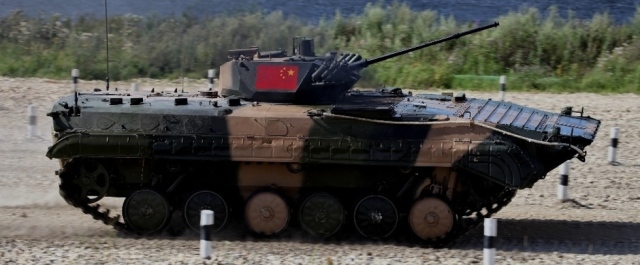By the beginning of the 90s, the era of "cloning" by Chinese specialists of Soviet military equipment was gradually fading into the past. One of the last samples, which was an almost exact copy of Soviet equipment, was the infantry fighting vehicle WZ-501.
Back in the early 90s, the structure of the land forces of the National Liberation Army of China (PLA) largely corresponded to the structure of the Red Army of the final period of World War II. The main means of transportation of motorized infantry were trucks. There were few "type 63" armored personnel carriers (a kind of reduced and simplified analogues of the M113) — they were available only in elite units. At the same time, the improvement of the economic situation of the People's Republic of China allowed the military and political leadership of the country to begin gradually saturating the army with more modern equipment. Among the new classes of weapons and military equipment that appeared in the PLA in the 90s were infantry fighting vehicles.
"Let's make exactly the same one!"
The chronology of the "cloning" of the BMP-1 by the Chinese has not yet been precisely established. The "source of inspiration" were samples obtained from Egypt around 1980. Based on them, an exact copy was created, which received the WZ-501 index. According to some sources, the first prototypes appeared in 1984, according to others — a little later, in 1986 or even 1987. The army designation WZ-501 — "type 86" speaks in favor of the latest version. However, the Chinese infantry fighting vehicles entered the troops much later — in 1992 or 1993. The first to receive them were parts of the elite 38th Army Group stationed in the vicinity of Beijing.
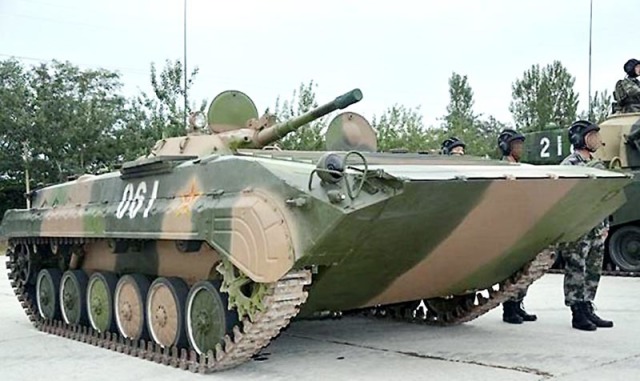
The WZ-501 is practically indistinguishable from the BMP-1
Image source: weaponsparade.com
What is the WZ-501? In short, this is an exact copy of the BMP-1 release of the early 70s. The 6V150 engine is copied from the Soviet UTD-20. The composition of the armament is also similar — a 73-mm smoothbore cannon with 40 rounds of ammunition, a 7.62-mm machine gun paired with it (2000 rounds of ammunition) and an ATGM launcher HJ-73B (copies of the Soviet 9M14M "Baby-P"; ammunition is four missiles). The BMP is equipped with a radio station A-220A (analog of the R-123M) and a tank intercom A-221A (copy of the R-124).
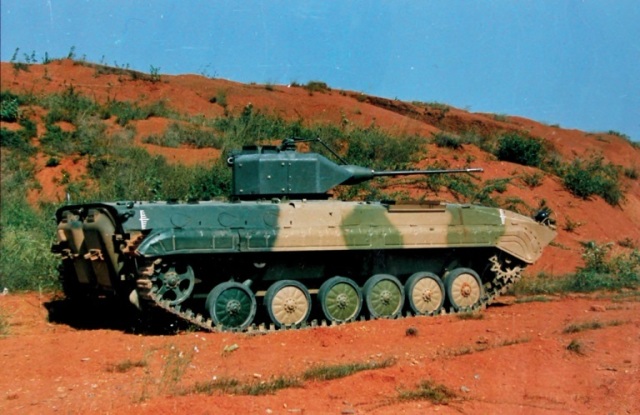
Prototype of the NFV-1 BMP
Image source: sinorecords.org
The obsolescence of the WZ-501 was obvious already at the time of its appearance. Therefore, in parallel with the "cloning" of the BMP-1, the Chinese tried to create a more advanced export-oriented model. In November 1986, the prototype NFV-1 was demonstrated, which became the fruit of cooperation between the Chinese concern NORINCO and the American firm FMC. In fact, it was a WZ-501 hull with an American single-seat Sharpshooter turret, in which a 25-mm Bushmaster M242 automatic cannon and a 7.62mm M240 machine gun paired with it were installed. This project was closed after the suppression of student unrest in Tiananmen Square. In the future, Chinese engineers improved the WZ-501 on their own.
Special vehicles
Several other combat vehicles have been created based on the WZ-501. In particular, in 1987, the WZ-503 armored personnel carrier was demonstrated, on which the turret was replaced by a turret with a shield cover with a 12.7 mm W-85 machine gun. The weight of the APC compared to the BMP decreased slightly (to 12.8 tons), and the capacity increased from 11 to 13 people (two crew members and 11 paratroopers). This option was probably not introduced into mass production. At the prototype stage, the WZ-504 self-propelled ATGM remained, on which a four-shot HJ-73B ATGM launcher was installed. The ammunition of the self-propelled ATGM is 16 missiles.
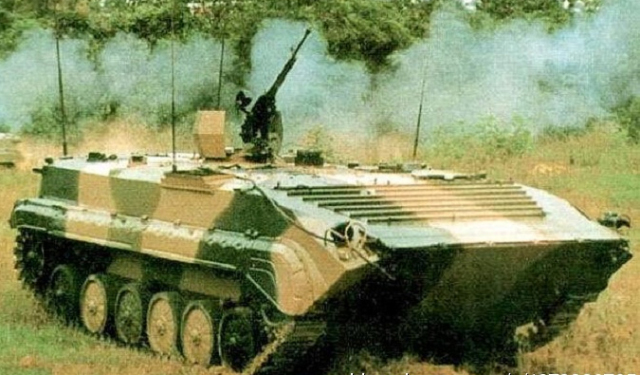
BTR WZ-503
Image source: tanks-encyclopedia.com
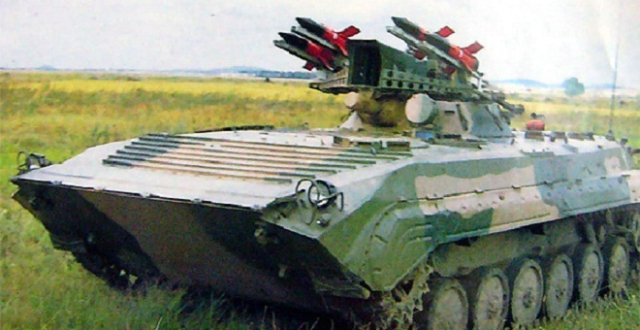
Self-propelled ATGM WZ-504
Image source: tanks-encyclopedia.com
Practically nothing is known about the WZ-502 self-propelled mortar. As for the WZ-506 command and staff vehicle, the prototype of which was created on the basis of the WZ-503 armored personnel carrier, the publications note that it was intended for the "regiment-division" management link. The KSHM has six workplaces for staff officers and communications operators, four radio stations and a diesel generator to provide power in the parking lot. The KSHM was not mass-produced, and the designation WZ-506 was subsequently reused for the Chinese BMD.
Development
Analyzing the improved modifications of the WZ-501 BMP, it is very difficult to get confused. Although there are relatively few of them, no more than four, but the discrepancy in the designations and description of the details of their design amazes the imagination of any observer unfamiliar with Chinese specifics. So, let's start with the variant known under the industrial designation WZ-505 (or WZ-501A). Its appearance was caused by the well-known "Achilles heel" of the BMP—1, namely, the small elevation angle of the main armament. On the WZ-505, the regular turret was replaced with a new one taken from the ZSL-92 wheeled BMP (WZ-551A). It has a 25-mm ZPT-90 cannon (derived from the Type 87 anti—aircraft gun, which is a drilled version of the Type 85 cannon - a copy of the Soviet 2A14 used in the ZU-23-2 installation), as well as a 7.62mm Type 86 machine gun paired with it. The ammunition of the gun is 400 shells, and the machine gun is 2000 rounds. The new tower was characterized by a large range of vertical aiming angles — from -8 to +55 °.
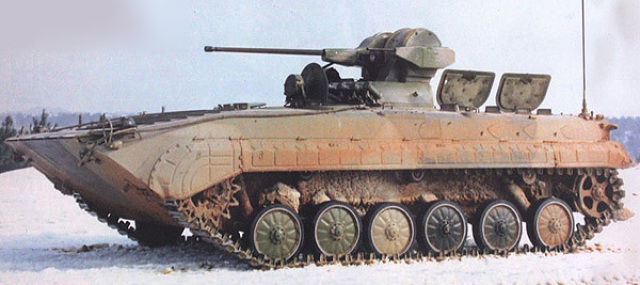
BMP WZ-505
Image source: tanks-encyclopedia.com
In addition to the new weapons, the WZ-505 received a boosted 6V150F engine, developing a power of 400 hp. Thanks to this, the maximum speed on the highway increased to 70 km / h, although the car was somewhat heavier compared to the prototype. Information about the fate of the WZ-505 is contradictory. Some sources mention that the BMP was adopted under the designation "type 86-I" and even cite the number of vehicles produced (about 350). According to other sources, the car was rejected by the military and was not mass-produced.
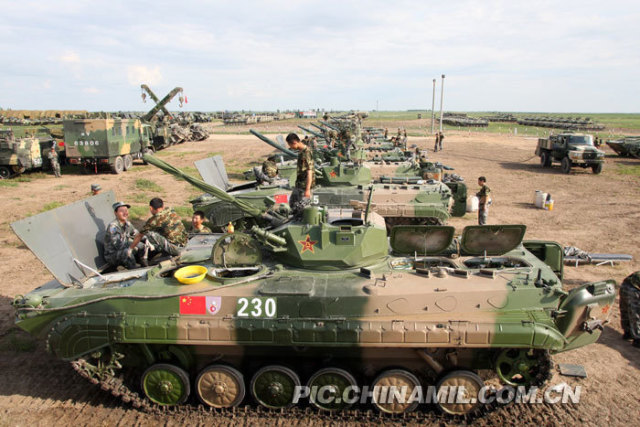
BMP ZBD-86A in preparation for joint Sino-Russian exercises on the territory of the Shenyang Military District. twothousandnine
Image source: slide.mil.news.sina.com.cn
The second attempt to turn the "Chinese BMP-1" into the "Chinese BMP-2" turned out to be more successful. The variant, which received the ZBD-86A index in the new Chinese designation system, and is called "type 86A" in the old way (although sometimes the designation "type 86M" is also found), is equipped with a single GCTWM tower - the same as on the ZBD—03 BMD and the ZSL-92B wheeled BMP. A 30-mm ZPT-99 cannon is installed in the tower — a Chinese copy of the Soviet 2A72 with a shortened barrel compared to the original. The gun has a two-way projectile feeding system, and the ready-to-fire ammunition consists of 350 shells (125 armor-piercing and 225 fragmentation). A 7.62 mm machine gun is paired with the cannon, and there is a guide for the HJ-73B ATGM in the rear of the turret. The tower is equipped with a two-plane stabilizer. Two three-barrel smoke grenade launchers are mounted on the sides of the tower.
Production of the ZBD-86A began in 2000. The machine, which appeared two decades later than the Soviet BMP-2, is inferior to it in armament: the ZPT-99 cannon has worse ballistic characteristics than the 2A42, and the ATGM "Competition" is superior to the Chinese HJ-73B missiles. Unlike the BMP-2, on the ZBD-86A, the commander is not in the tower, but in the hull, which affects his situational awareness. On the other hand, the ZBD-86A has more modern sighting and surveillance equipment, including a thermal imaging camera and a laser rangefinder.
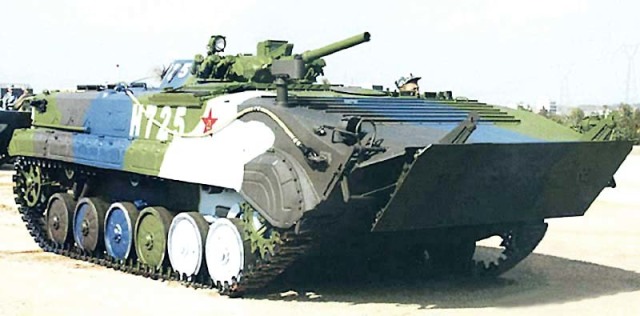
BMP "type 86G"
Image source: weaponsparade.com
Another variant of the WZ-501, designated "type 86B" (sometimes — "type 86G", that is, Gai — "improved") at first glance practically does not differ from the basic machine. He retained the turret and armament of the WZ-501. Only after looking closely, you can notice the increased (by about 150 mm) height of the case. The main motive for this alteration was not the desire to improve the comfort for the landing, but the desire to slightly increase the buoyancy margin (by increasing the volume of the hull). The fact is that the original BMP-1 has, to put it mildly, mediocre seaworthiness. It can still overcome rivers afloat, but it is already risky to participate in amphibious operations with entry into the water from ships at a distance from the shore. As a result, the BMP-1 did not enter service with the Marine Corps in the USSR. The Chinese also tried to adapt it for naval landings.
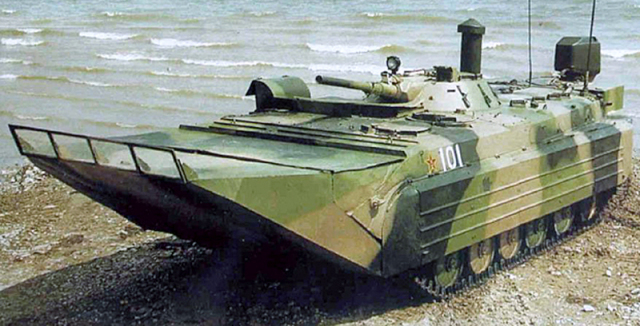
BMP WZ-501HG
Image source: weaponsparade.com
As far as can be judged from the available photographic materials, the "Type 86B" was mass-produced and is used for its intended purpose by units of the PLA Marine Corps. However, the seaworthiness of this BMP, although improved compared to the original, still leaves much to be desired. An attempt to radically increase them led to the appearance of a very strange machine, known under the designation WZ-501HG (Hai Gai — "improved seaworthiness"). The car retained the body of the original WZ-501 BMP (not increased in height), but additional floats appeared in front and rear. The available images suggest that these floats are not dropable, that is, landing and disembarkation of troops is now possible only through the upper hatches. The standard wave—reflecting shield is no longer needed at all - it was dismantled, replaced by a fixed frame with four small windows shifted forward. Protective covers are mounted above the engine air intake and exhaust device. But the most exotic design element of the WZ-501HG was.. outboard outboard motor mounted in the rear of the car! In general, the result of the work of Chinese designers was a rather ridiculous-looking hybrid of an IFV and a boat. It is not surprising that this option did not get into mass production.
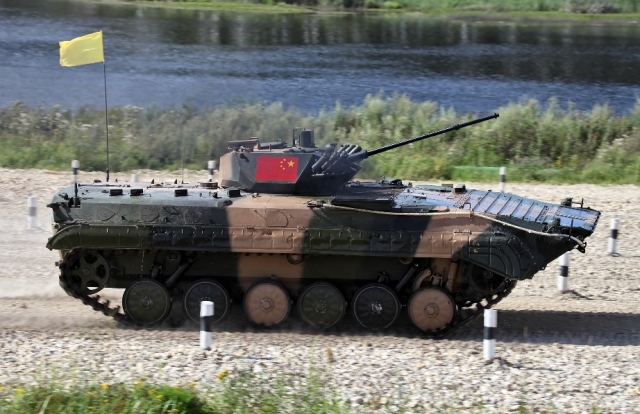
BMP ZBD-86A during the Suvorov Onslaught competition, 2016
Image source: vitalykuzmin.net
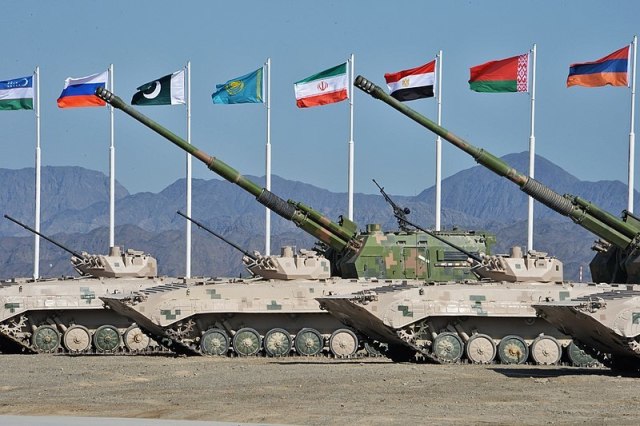
BMP ZBD-86A at the opening of the "Army Games". Korla (China), 2019
Image source: function.mil.ru
Currently, the Type 86 infantry fighting vehicles remain one of the main means of transporting infantry in heavy mixed brigades of the PLA ground forces, although their number is already slightly ahead of the more modern ZBD-04 infantry fighting vehicles. As of 2020, approximately 1,000 ZBD-86s (the basic version of the WZ-501) and 1,250 ZBD-86A were in service. Information about the export of these IFVs is very vague. There is information that a certain number of WZ-501 (under the export designation YW-501) got to Iran, where their own BMP "Boragh" was created on their basis. Reports of the delivery of YW-501 to Iraq, Myanmar and Sri Lanka are not confirmed by photographic materials. But in the Chinese army, the ZBD-86/ZBD-86A infantry fighting vehicles continue to be intensively operated. In particular, in the summer of 20016, ZBD-86A debuted abroad — they took part in the competitions of the crews of the Suvorov Onslaught BMP. The Chinese team took the second place, with the winner (the Russian team) and the other participants of the final (the teams of Belarus and Iran) performing on the BMP-2.
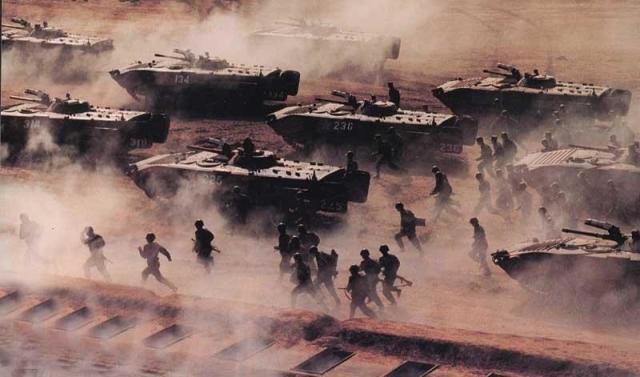
The ZBD-86 BMP remains one of the most common in the PLA
Image source: topgun.rin.ru
|
Combat weight, t
|
13,7
|
|---|---|
|
Crew+ landing party, person
|
3+8
|
|
Armament (ammunition)
|
1 30 mm cannon (350 rounds), 1 7.62mm machine gun (2000 rounds), 1 HJ-73B ATGM (4 ATGMS)
|
|
Dimensions, mm:
|
|
|
length
height
width
|
6740
2200
2970
|
|
Engine power, hp
|
300
|
|
Maximum speed on land (afloat), km/h
|
64 (7)
|
|
Power reserve, km
|
500
|
References:
- army-guide.com
- slide.mil.news.sina.com.cn
- weaponsparade.com
- weaponsystems.net
- sinodefence.com
- tanks-encyclopedia.com
Grigory Kalyanov
